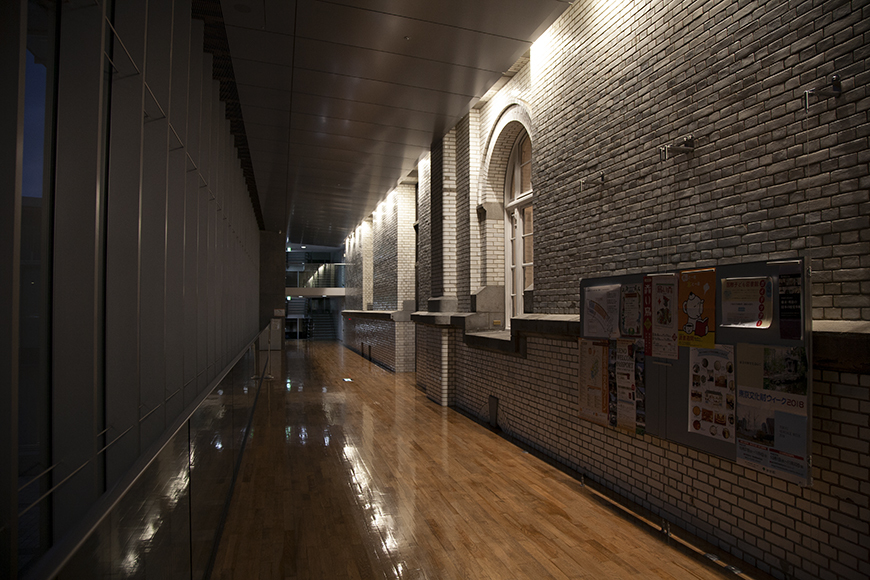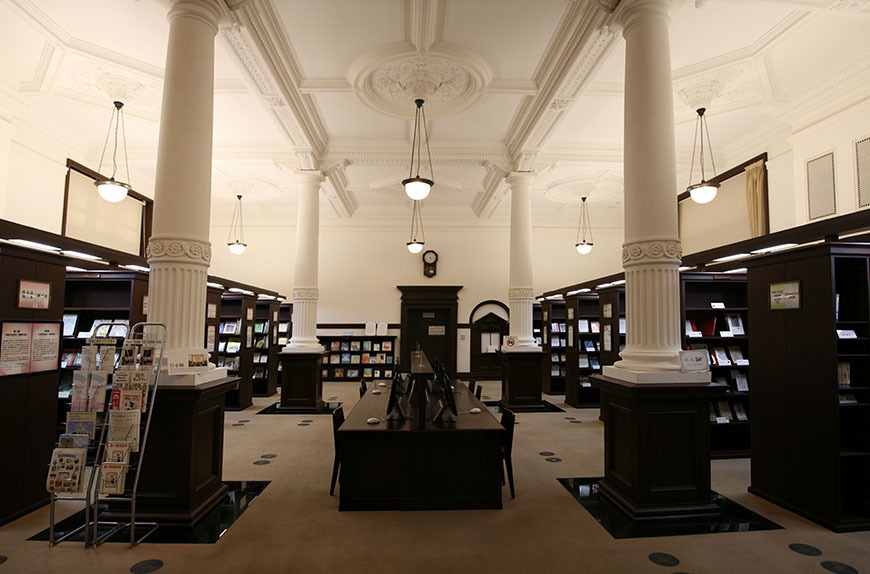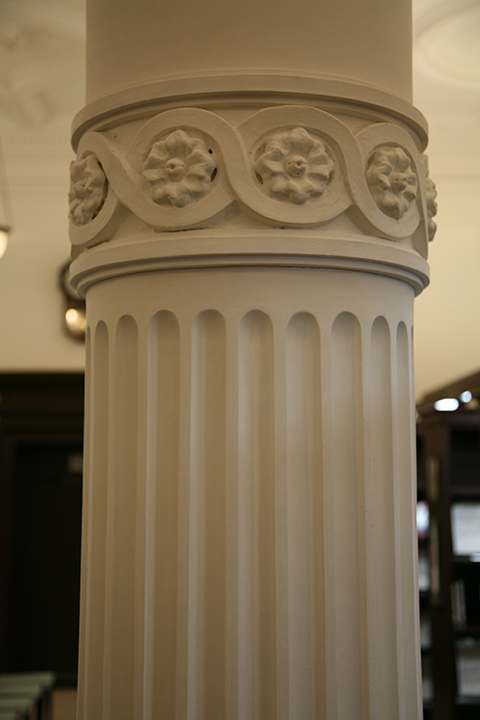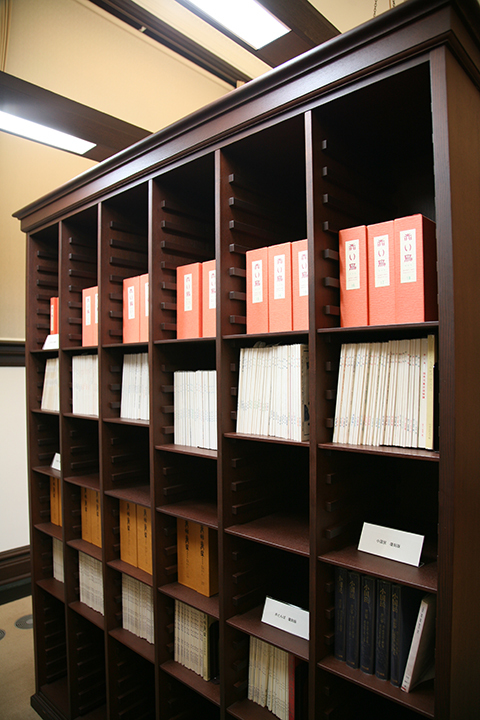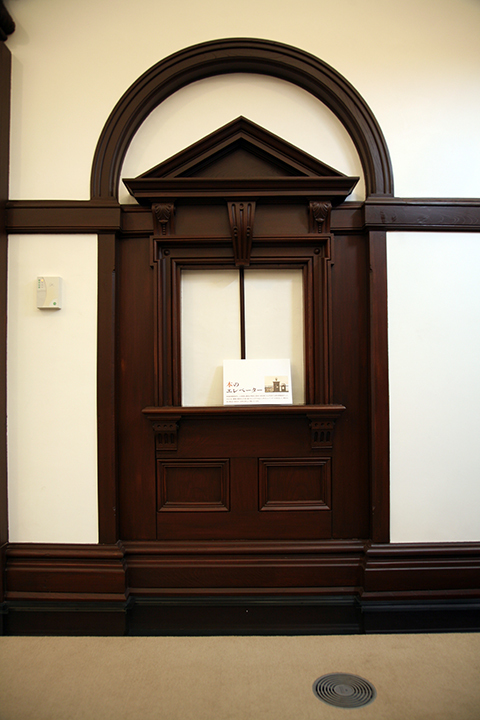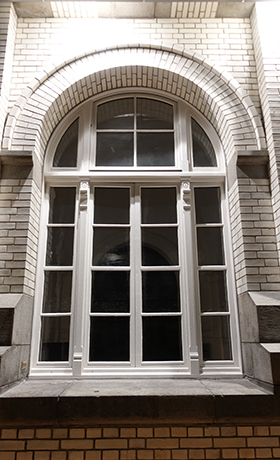
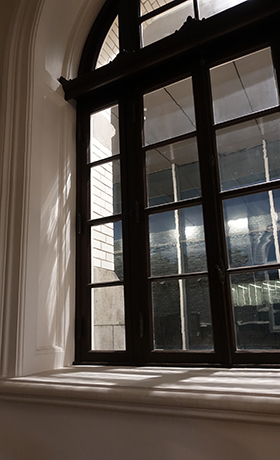
Glasses of those days when the brick building was founded are still used for the windows. Soft light come into rooms through slightly rugged glasses made in the Meiji Period.
The older building (the brick building) has three floors. There is a hall and "Book Museum" on the third floor. "Teens' Research Room" and "Gallery of Children's Literature" are on the second floor. Four columns are set up in the Gallery of Children's Literature, making it a magnificent space. On the first floor, there are "Meet the World" and "Children's Library." (continued in the lower column)
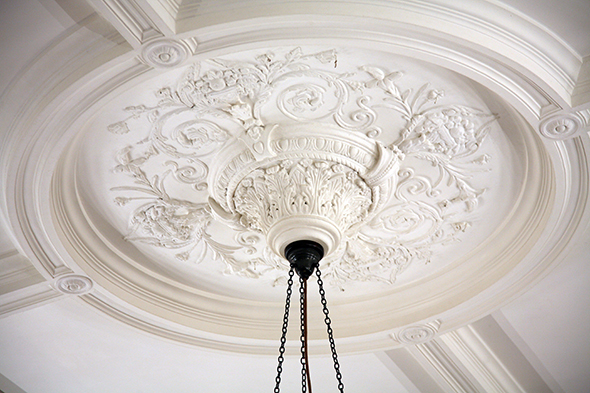
The columns in the Gallery of Children's Literature are wrapped with "Takekomai," a bamboo structure wound into steel frames, and finished with plaster. The decorations of the columns are made by filling plaster into molds, removing the plaster before it hardens, and putting it on the surfaces. Also, the decorations on the ceiling are depicted by plasterers with trowels. The decorations were restored in the same method as those of at that time, and the technique was passed on to the next generation.


Glasses of those days when the brick building was founded are still used for the windows. Soft light come into rooms through slightly rugged glasses made in the Meiji Period.














